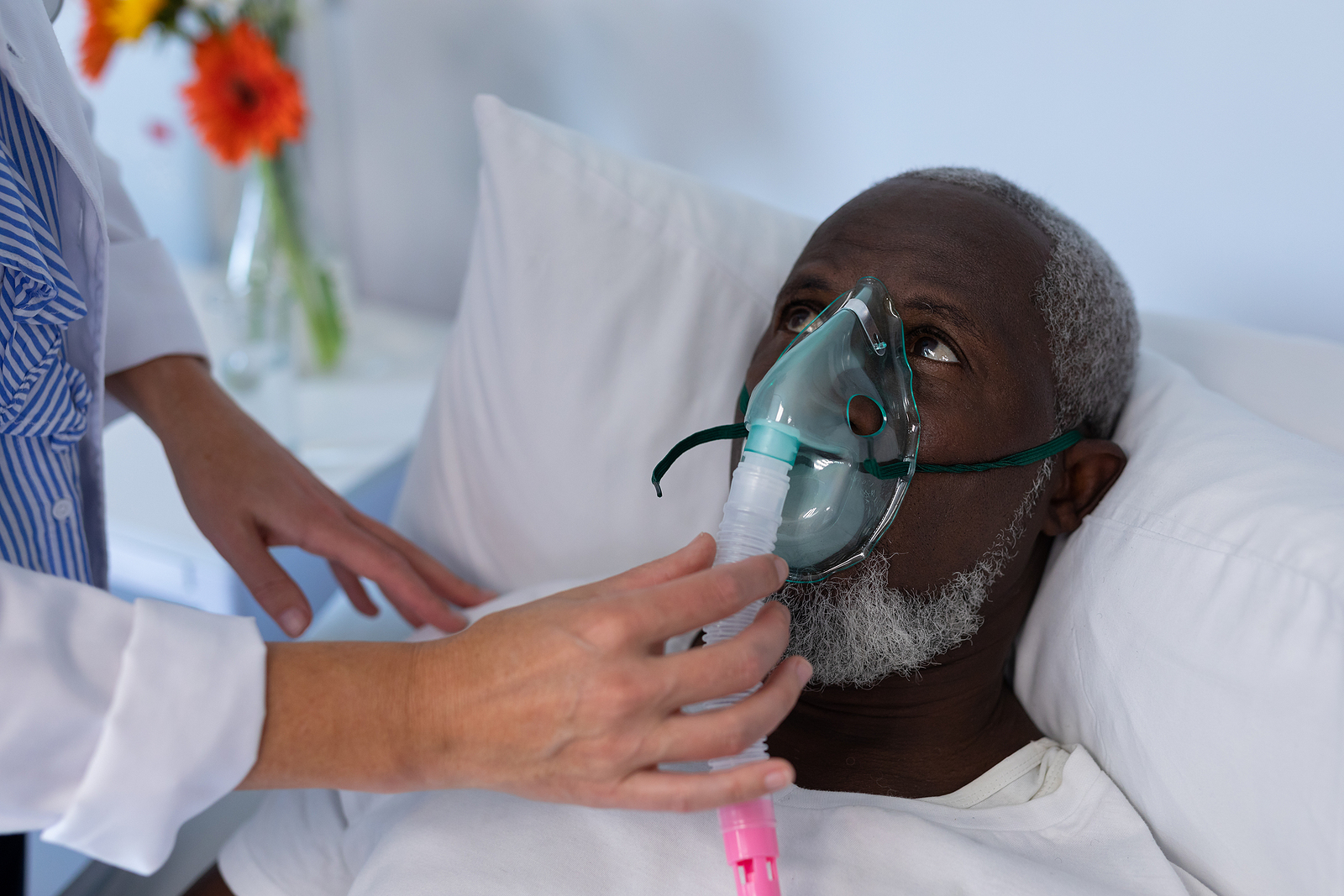Newsletter 2021
Newsletter November 2021: High flow nasal oxygen: A rising star waiting to be discovered
Cheah Kean Seng,MD
Department of Anaesthesia & Intensive Care
Tallaght University Hospital
dkscheah@gmail.com
High flow nasal oxygen therapy (HFNO2) is gaining popularity of late and rapidly recognised as new oxygen therapy in the treatment of respiratory failure, and the fame exploded exponentially after the COVID-19 pandemic.
HFNO2 was initially invented for neonates to provide continuous positive airway pressure (CPAP). The conventional tight-fitting face mask makes neonates vulnerable to pressure sores, so the design of HFNO2 is to provide CPAP via a specially designed cannula that fits in those tiny little nostrils without compromising blood flow to the skin. HFNO2 consists of a nasal cannula, an air/oxygen blender and a humidication device. The warm humidified air helps to maintain normal mucociliary function along the respiratory epithelium and prevent airway dryness. It can provide FiO2 close to 1.0 to improve the oxygen reserve and reduce anatomical dead space. The CPAP effects improve end-expiratory lung volume and alveolar recruitment. It allows modification of Fi02 0.21-1.0 and flow of 40-60 L/min.
Whilst strong evidence of benefits in paediatric populations exist, there is still a lot of debate going on for adults. Until now there are still no clear guidelines on the indications, but it has been tested in a few circumstances below. It is versatile, user-friendly and can be operated by anyone even when not ventilator trained.
Indications:
Hypoxaemic respiratory failure
Several studies have shown that HFNO is superior to conventional forms of oxygen administration in improving oxygenation and patient comfort while reducing respiratory rate, dyspnoea and clinical signs of respiratory distress. Sztrymf et al. noticed 70% of patients from a study escaped intubation with HFNO2, and showed significant improvement in partial pressure oxygen, dyspnoea and respiratory rate¹. In FLORALI trial, the use of HFNO2 did not affect the intubation rate, (except in patients with PF ratio <200mmHg) but resulted in lower mortality at 90 days². It may benefit mild ARDS, although only based on data from observational studies.³. Since the outbreak of the COVID-19 pandemic, its role has been heavily investigated and evidence so far is promising. In the resource-constrained settings where health care capacity is struggling to meet the demand in ventilators and ICU beds, HFNO2 helps to prevent worsening oxygenation, decreasing the need for intubation in patients and it reduced the length of hospital stay in COVID-19 patients⁴.
Airway management
Preoxygenation is an important step prior to intubation for denitrogenation. Commonly the mask must be removed for intubation, but with HFNO2 it can be kept on the patient without interruption to intubate. It maintains oxygen insufflation into the lungs by diffusion during apnoea. This longer period of apnoea is essential in a patient at risk of early desaturation from low oxygen reserve (obese, obstetric and bariatric patient). It has been used during fibreoptic intubation as it delivers FiO2 near to 1.0 through nasal cannula and allows the passage of fibreoptic scope.
Post extubation/post-operative oxygen support
HFNO2 has a role as pre-emptive therapy in patients with a high risk of extubation failure. Not only it is non-inferior to NIV in terms of reintubation rate and mortality but patients have better tolerance⁵. Its use in post-operation is still inconclusive after a study on post-cardiothoracic and abdominal surgery⁶.
Other patient group
Lately, the use of HFNO2 was tested beyond theatre and ICU, such as oxygen support in bronchoscopy. During bronchoscopy, ventilation/perfusion mismatch can happen. The arterial tension is expected to drop 20mmHg and the most critical reduction usually occurs during lavage. There is also a tendency to develop atelectasis due to suction. High FiO2 and PEEP from HFNO2 help to counteract this mechanism. Obese patients are particularly at risk of desaturation and hypoxaemic from sedation, so HFNO2 can solve this problem too. Its evidence in palliative, immuno-suppression, chronic obstructive airway disease and pulmonary oedema is still lacking.
Contraindications:
The contraindications are somewhat similar to NIV, except it is an open system so the sealed interface is not necessary. It might be a solution for those who are claustrophobic. Patients with a low consciousness, facial trauma or facial malformations should not be given it. It should also not be used in haemodynamically unstable patients.
Patient selection is important for the successful outcome of HFNO2. Inappropriate perseverance to it will cause a delay in intubation and poor outcome. When giving HFNO2 to patients, clinicians must remember that this is a narrow window period for them to decide if treatment is successful, or needs intubation regardless. There is still no consensus on what clinical parameter we can use as a guide to conclude that the patient will not benefit further and proceed to plan B (invasive mechanical ventilation). ROX score (ratio of SpO2/FIO2 to respiratory rate) is seen as a useful indicator. Quoted from the European Respiratory Journal, a ROX scores greater or equal to 4.88 at 12 hours predicts a lower risk of progressing to mechanical ventilation⁷. Apart from that, APACHE 2 and degree of PF ratio improvement seems to be a promising predictor as well⁸. The concern regarding the association of HFNO2 with increased aerosolisation is another topic of debate. Jie Li et al refute this hypothesis as they found no increase in contamination from air sampling and sample plates inside the room of pneumonia patients in ICU.
Future research:
The role of HFNO2 is in its infancy period and only more trials can tell how far it can go. In the population cohort, we should narrow the focus to comorbid patients (chronic lung disease, cardiac disease and morbidly obese) as it helps to avoid risks of intubation and invasive ventilation. In palliative care, is there any role for HFNO2 as symptomatic support in terminally ill patients? Is it more cost-effective assuming it can be administered at home? We need a strong level of recommendation on the threshold of ROX score and time of scoring, to decide on timing we should make the call to stop and proceed to intubate. We are also lacking evidence on optimal flow and FiO2 in clinical settings. A perfect example from a recently published study in patients during cardiac electronic device insertion¹⁰. This study compared the difference in the patient’s carbon dioxide (CO2) level between HFNO2 and facemask oxygen during the procedure. There was no difference in CO2 level and a surprisingly higher incidence of desaturation seen in the HFNO2 group. One of the explanations could be due to the suboptimal gas flow of or FiO2 during the procedure.
In general, HFNO2 is an exciting prospect. No one has an idea of how far it can go until we get more evidence from further studies. It has the potential to revolutionise oxygen therapy in future. It is a rising star waiting to be discovered.
References
- Sztrymf B, Messika J, Bertrand F et al.. Intensive Care Med. 2011; 37:1780. doi: 10.1007/s00134-011-2354-6. Epub 2011 Sep 27. PMID: 21946925.
- Frat JP, Thille AW, Mercat A et al; FLORALI Study Group; REVA Network. N Engl J Med. 2015; 372:2185.
- Demoule A, Hill N, Navalesi P. Intensive Care Med. 2016; 42(5):768. doi: 10.1007/s00134-016-4323-6. Epub 2016 Mar 23. PMID: 27007110.
- Mellado-Artigas, R., Ferreyro, B.L. et al. Crit Care 2021;25: 58 .
- Hernández G, Vaquero C, Colinas L et al.. JAMA. 2016; 316:1565.
- Futier E, Paugam-Burtz C, Godet T et al; Intensive Care Med. 2016 ; 42:1888.
- Cysneiros A, Organista D, Machado D et al. European Respiratory Journal 2020 ;56: 3446.
- Shang X, Wang Y.. Ther Adv Respir Dis. 2021 ; 15:17534666211004235.
- Jie Li, James B. Fink, Stephan Ehrmann; Eur Resp J 2020;56:2003136
- Conway A, Collins P, Chang K et al. l. Eur J Anaesthesiol. 2021 ; 38:839. doi: 10.1097/EJA.0000000000001458. PMID: 33492872.










